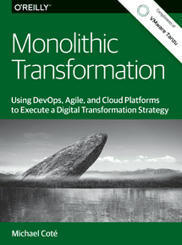Part I: Fostering Change. Examine the principles of small-batch thinking, user-centric design, and shifting from functional teams to product teams.
Part II: Cloud Native Cookbook for Leadership. Apply those principles across your organization, from creating and communicating your strategy through building your pipeline and choosing the right cloud platform.
Research and publish the best content.
Get Started for FREE
Sign up with Facebook Sign up with X
I don't have a Facebook or a X account
Already have an account: Login
For Product Owners/Product Managers and Scrum Teams: Growth Hacking, Devops, Agile, Lean for IT, Lean Startup, customer centric, software quality...
Curated by
Mickael Ruau
 Your new post is loading... Your new post is loading...
 Your new post is loading... Your new post is loading...
|
|













